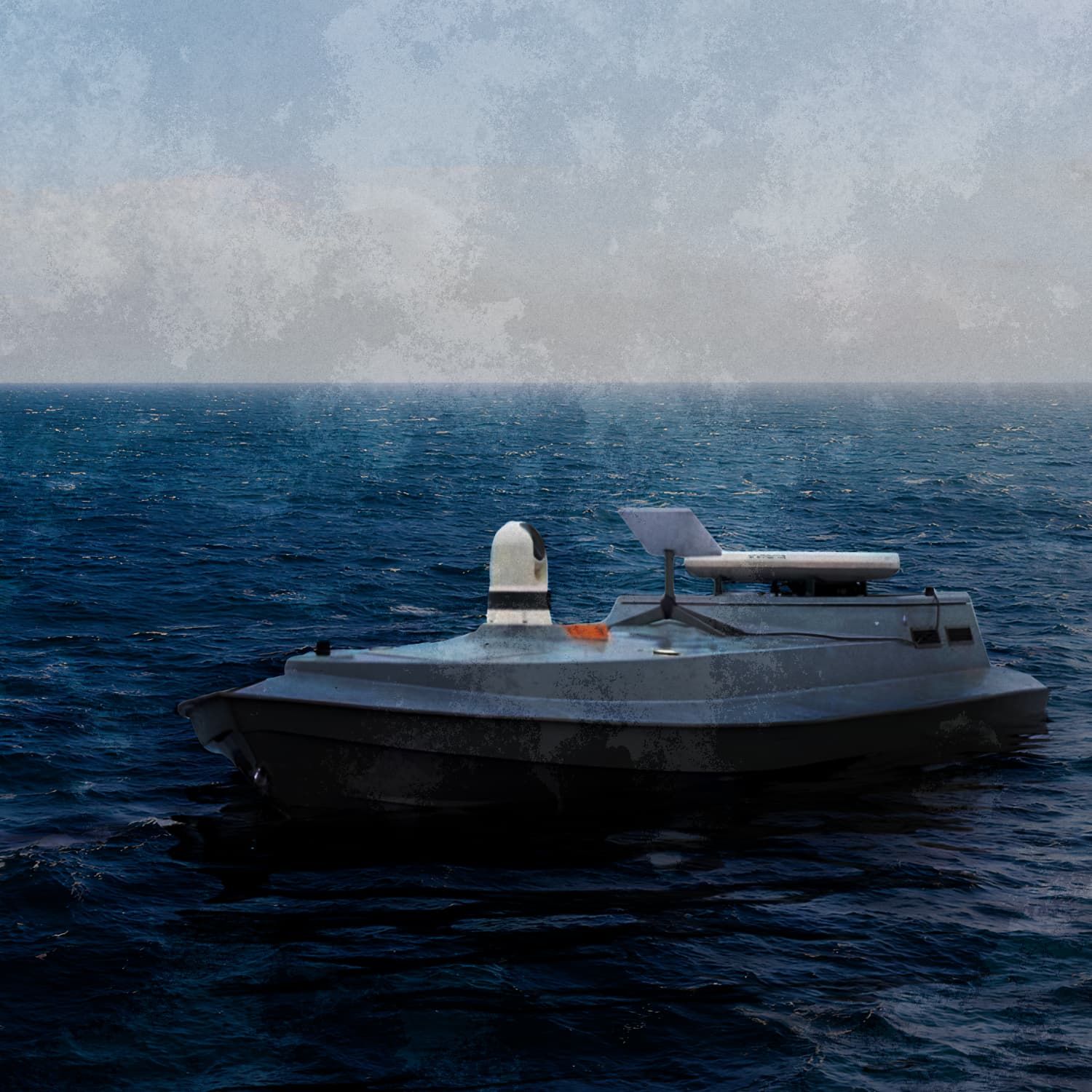Sea Baby Naval Drone: The Ukrainian Innovation Redefining Naval Warfare
At 3:05 AM on July 17, 2023, a small yet powerful Ukrainian Sea Baby drone struck the Crimean Bridge — and shook more than just concrete. The footage flooded Ukrainian social media, delivering both tactical results and emotional resonance. The Crimean Bridge strike was more than a symbolic blow; it marked a breakthrough in naval combat strategy.
But the Sea Baby naval drone is far more than viral content. Behind the dramatic visuals lies a system that delivers real operational value: enemy ships destroyed, russian logistics disrupted, and a new level of anxiety introduced into the Black Sea theater. Let’s take a closer look at this technological marvel and how it continues to shake the occupiers.
Origins of the Ukrainian Sea Baby Drone
When russia launched its full-scale invasion of Ukraine in 2022, the Ukrainian defense forces and engineers were pushed to rethink the future of warfare. Facing an overwhelming naval force, Ukraine placed its bets on innovation — and particularly, on unmanned surface vessels. That’s how the first generation of Sea Baby naval drones emerged.
Developed in 2022 under the initiative of the Security Service of Ukraine and supported by private tech companies, the Sea Baby drone was designed to strike enemy ships with precision while eliminating the need to risk personnel. What started as a kamikaze-style platform soon evolved into a multi-use naval system capable of autonomous targeting and return missions.
By late 2024, these Sea Baby marine drones began returning fire — literally. Equipped with machine guns and smart targeting systems, upgraded models could now engage threats from land, air, or sea. In one striking case, Sea Baby drones shot down russian helicopters that attempted interception. With the integration of ballistic programs, these drones can now identify and track targets automatically — whether to eliminate a helicopter crew or force the aircraft into retreat.
What used to be a one-way trip now looks more like a round-trip assault: Sea Baby naval drones can launch Grad rockets — and come home.
Combat Record: What Has the Sea Baby Drone Achieved?
Though the Ukrainian Sea Baby drone first made battlefield appearances in 2022, its breakout moment came in July 2023 with the high-profile strike on the Crimean Bridge. As a major supply artery for the occupying forces, the bridge was a legitimate military target. The successful damage caused by the Sea Baby drone not only thrilled Ukrainians but dealt a serious blow to russian logistics.
From 2022 to 2023, these Baby Sea drones launched a series of targeted attacks, damaging or destroying several vessels of the russian Black Sea Fleet, including:
- Frigates Admiral Makarov and Admiral Essen;
- Minesweeper Ivan Golubets;
- Patrol ship Ladny;
- Missile boats Samum and Buyan;
- Support vessel Pavel Derzhavin, which became inoperable after the hit;
- Tugboat Professor Nikolai Muru and hydrographic ship Vladimir Kozytskyi.
What makes these results even more impressive is the cost ratio. A single Sea Baby drone costs around 8.5 million UAH — hundreds of times cheaper than the vessels it disables. The Pavel Derzhavin, for example, is valued at approximately $65 million. That’s a 300–400x efficiency multiplier in Ukraine’s favor.
Even without a traditional navy, Ukraine has used the Sea Baby drone to maintain a persistent and threatening maritime presence — one the enemy cannot ignore.
Sea Baby Drone Specs: A Closer Look
The modern Sea Baby drone is a modular weapons platform with flexible loadouts. It can carry aerial drones, rocket artillery, or large-caliber machine guns — even combining them in one mission. The concept of fitting Grad rockets on a naval drone was pioneered by Ukrainian engineers — a world-first.
Here’s what defines the latest generation of the Sea Baby marine drone:
- Payload Capacity: Up to 1,000 kg (customizable with fuel/explosives);
- Operational Range: Over 1,000 km — impressive for any Sea Baby drone size;
- Maximum Speed: Up to 90 km/h;
- Weapons Support: Multiple Grad launchers, heavy machine guns, and more;
- Mission Flexibility: Adaptable for direct strikes, shoreline attacks, and remote sea mine deployment;
- Construction: Composite hull for stealth and radar evasion.
In 2022, an early sea drone mission was cut short when Starlink connectivity dropped near Crimea — due to Elon Musk’s refusal to allow use of the tech there. As a result, newer versions of the Ukraine Sea Baby drone were fitted with upgraded communication and navigation systems, resistant to electronic warfare and signal jamming.
Thanks to advanced stealth features, the Sea Baby drone remains nearly invisible to enemy radar, allowing it to breach heavily guarded zones undetected.
Strategic Significance and Future Outlook
The success of the sea baby naval drone has proven that unmanned maritime systems can shift the battlefield dynamic. Ukraine is expected to continue evolving the sea baby drone — enhancing autonomy, boosting firepower, and increasing resistance to russian EW systems.
These Ukrainian Sea Baby drones have not only disrupted traditional naval operations but also revolutionized Ukrainian military tactics. They allow for powerful, precise strikes — all without putting soldiers at risk. As Ukraine continues investing in unmanned warfare, the Sea Baby drone stands out as a key pillar of national defense — even in a post-war context.
